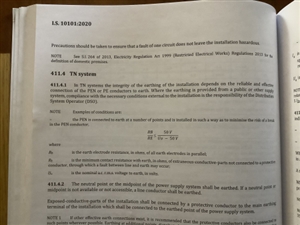
Perhaps you can shed some light on this condition for TNCS systems in the Irish Rules. I can only see that as RE decreases RB becomes more onerous but to be honest I am not really getting the essence.
If we took the DNO earth resistance RB as 20 ohms then the consumers earth rod could have a maximum resistance of 5.26 ohms.
If we took the DNO earth resistance RB as 20 ohms then the consumers earth rod could have a maximum resistance of 5.26 ohms.
We're about to take you to the IET registration website. Don't worry though, you'll be sent straight back to the community after completing the registration.
Continue to the IET registration site